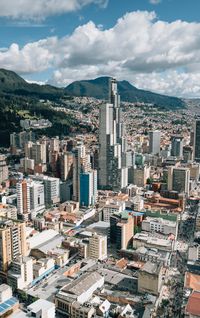Cesar Arias, from the Ministry of Finance & Public Credit, kicked off the roundtable with an overview of the impact of Covid-19 on the Colombian economy and the government’s response to those issues.
The impact was most acute in three areas, according to Arias: poverty increased by 10 percentage points, which brought with it all the social tensions associated with an increase in impoverishment; unemployment, already a well-established double-digit feature in Colombia’s economy before the onset of the pandemic, went up from 15% to 20% at the height of the pandemic – the economy losing somewhere around 5 million jobs; and companies, especially small and medium-sized enterprises, all suffered from the downturn in the global trading environment.
“We designed our policy strategies based on those three main indicators,” said Arias.
The first programme launched in 2020, comprising non-conditional cash transfers, a programme that went out to nearly 2 million households, the equivalent of around 8 million people below the poverty line. The second programme comprised government guarantees on lending to small and medium-sized companies.
“This was very important,” said Arias. “During the pandemic we discovered that there wasn’t necessarily a shortage of liquidity in the market, but there was a shortage of appetite to deploy that liquidity into companies that were hit by the pandemic.”
The third part of the strategy was more aligned with central bank activity, in that it concerned providing enough liquidity to the system through repos, and the purchase of corporate debt and government debt in the secondary market.
“All in all, the implementation of these programmes accounted for 11% of GDP,” said Arias. “Part of it was on-budget; part of it was off-budget – through the central bank – and the results were encouraging. Colombia outperformed many countries in the region, contracting by just 6.8% last year and rebounding the quickest this year.”
Through the government’s efforts, the country was able to transform its health system, doubling intensive care units and developing the capacity to vaccinate half-a-million people per day.
As well as the social benefits from its programmes, the corporate sector found some encouragement in the government’s efforts.
“The government response has been sufficient throughout the pandemic,” said Antonio Gutierrez of Scotiabank Colpatria. “The feedback I’ve been getting from our clients has been excellent. They have really appreciated the implementation of these measures in helping them through the tough times.”
He outlined programmes that supported companies in maintaining employment levels, even in the face of a reduction in earnings, and programmes of credit from government banks and agencies. Most of these programmes remain in place today.
Representatives on the panel from the corporate world contributed their experiences of operating through Covid-19 and navigating through the challenges faced by their companies.
Colombian conglomerate Grupo Argos was not immune to the impact of the pandemic, experiencing particularly high levels of volatility and uncertainty in its airport holdings and road operations, and in levels of demand for its energy and cement businesses.
“We structured a plan for our group of companies with three things in mind,” said Alejando Piedrahita of Grupo Argos. “The most important was to keep our workmates safe; the second was to keep our employees safe in terms of job security; and the third was to support not only our shareholders, but our stakeholders.”
Argos adopted plans to speed up payment for the small and medium-sized companies it works with as it recognised the need for greater flexibility and liquidity within its supply chain.
It also looked at increasing financial flexibility internally, reducing capex and increasing liquidity to support it through the crisis but also to protect its credit ratings. “For Grupo Argos and our companies, access to capital markets is vital,” said Piedrahita.
For energy company Grupo Energia Bogota, the impact of Covid was relatively benign, with the firm managing to increase its Ebitda in 2020, thanks to the organic growth and acqusitions strategy of the previous 18 months.
“We are in a privileged sector in terms of resilience to the impact of Covid,” said Jorge Tabares of Grupo Energia Bogota. “We were able to maintain our operations throughout the pandemic and grow the business. Even though there was a drop in consumption to begin with, demand has returned this year to pre-Covid levels.”
In the face of uncertainty for capital markets, Grupo Energia Bogota, along with many of its peers, focused on building a cash cushion. It has been paying back debt and reducing its cash position as it returns to a more normal operating level.
For Promigas, the natural gas transport company with investments in Colombia and Peru, the main impact of Covid came from the lockdown itself.
“The lockdown affected a big percentage of our 4 million customers,” said Fiorella Frieri of Promigas. Businesses were forced to close or stop offering their services and demand for gas decreased.
“During the months of March through June 2020 demand fell by around 30% from our corporate customers,” said Frieri.
The lockdown also affected its residential users, 80% of which belong to the lowest income bracket.
“These people usually generate their income on a daily basis in informal jobs. Not being able to go out to work means that they don’t have money to pay bills or buy food. That put a lot of pressure on our receivables,” she said.
Promigas navigated its way through its difficulties with a combination of internal measures and government support. It implemented a responsible austerity programme to control costs, and postponed planned capex lying outside of investment mandated by the regulator, from 2020 until 2021. It also found assistance in government packages, including the employment support programme (PAEF) that was available from April 2020 to March 2021, and the zero-interest loans available for utility companies and natural gas and electricity distribution companies. This was used to help finance user invoices of customers in the lowest income bracket.
The impact of Covid was not just limited to costs and revenues.
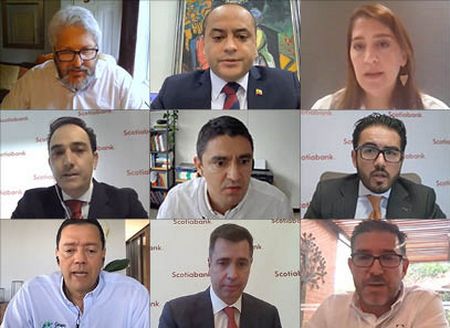
“We needed to raise around US$350m–$400m in working capital and capex,” said Frieri. “And we faced a cautious financial sector experiencing tight liquidity, and that resulted in borrowing at higher rates and shorter terms.”
Nevertheless, Promigas raised the US$350m it needed in 2020 between March and May, paying back or amortising debt through the year if planned expenditure was not realised.
“The situation turned out better than what we expected, so at the end of the year, we were able to pre-pay around US$100m–$150m of debt,” said Frieri.
Promigas’ experience was reflected throughout the economy with demand for credit from the banking sector rising rapidly in the early stages of the pandemic as corporates built up their liquidity buffers. As the economy began to recover in the second half of 2020, however, those same corporates began to return liquidity to lenders. Since the start of the year, demand for credit has been rising again as the situation continues to normalise.
“Overall, we saw a greater demand for liquidity throughout the banking system, throughout the whole economy,” said Gustavo Ale of Scotiabank Colpatria. “We have been through unprecedented times, but I think the banking system proved receptive to the situation it faced and performed well.”
Covid-19 also made for a challenging market in the investment community. Pension fund AFP Proteccion, addressed the risks it faced by managing liquidity positions strategically. It then took advantage of the sell-off in markets at the beginning of 2020 to gradually increase exposure.
“Since our portfolios are long-term oriented, we were able to use the short-term sell-off as an opportunity to increase our risk position,” said Felipe Herrera of AFP Proteccion. It increased the global equity allocation of its largest portfolio from 40% to 45%. It also increased allocations to alternative investment, increasing exposure to that sector from 14% at the beginning of 2020 to close to 20% some 18 months later.
“Basically, we’ve changed our allocations to more public equity and private equity and decreased the duration contributions in our portfolio because real rates of interest in fixed income are so low,” said Herrera.
Low interest rates
Low real rates of interest in fixed income markets could be here to stay for a while longer, however, thanks to the action of the US Federal Reserve when the pandemic first appeared.
“The Fed started injecting huge amounts of liquidity into the markets and this changed the perception of investors,” said Juan Fullaondo of Scotiabank. “Rates are going to be lower for longer.”
“Lower rates for longer” proved to be good news for borrowers, not only in the US, but for all emerging markets and, specifically, Latin America. Demand for fixed income products returned in force after a short hiatus and bond issuance volumes have ballooned in the last 18 months as a consequence. It is a dynamic that is still in play.
“Every time we go to market for an issuer, books are probably 2.5–3.5 times oversubscribed and pricing is compressed by 5bp–10bp from initial price talk,” said Fullaondo.
Action by the Fed in supporting global liquidity, has had a positive knock-on for sovereigns needing to borrow heavily when they need to finance domestic pandemic mitigation programmes.
“LatAm has faced incredible challenges in respect of budgetary pressure through the pandemic,” said Fullaondo. “But thanks to the liquidity in the market, regional sovereigns have sailed through this crisis relatively smoothly. I hope that dynamic prevails for the next couple of years. I think it will.”
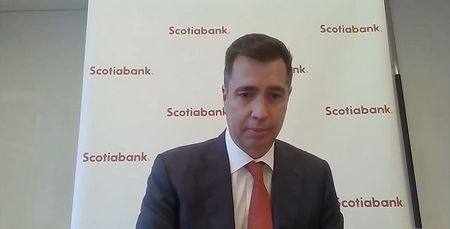
Lower ratings
While the bond markets have been receptive to issuers, the extra budgetary burden on sovereign coffers and pressure on public finances have resulted in the credit ratings agencies announcing a series of downgrades and negative outlooks. Colombia has not been exempt from adverse ratings action.
Colombia lost its investment-grade rating in May when S&P downgraded it to BB+ from BBB–. Fitch followed suit in July.
Arias, who spent five years as a ratings agency analyst, addressed the decisions.
“We have a clear commitment to deliver value in our assets to investors, both domestically and internationally,” said Arias. “We don’t act to satisfy the desires of one or the other but what we want to do is deliver an economy that is growing robustly, and one that sets an example of prudent fiscal management.”
He went on to lay out Colombia’s public finances credentials.
“Colombia is a country with a long track record of responsible fiscal management,” he said. “And we decided to reinforce that discipline by submitting a plan for fiscal reform to Congress that tackles three objectives.”
The first institutionalises some of the social policies required for social stability and to respond to Covid-19: continuing the non-conditional cash transfer programmes; extending the employment support programme; and introducing packages geared towards strengthening access to education and providing incentives for companies to hire young people.
The second is identifying sources of income to cover the programmes and to start the process of fiscal consolidation. Two new sources of income were identified that deliver a net a contribution of around 1% of GDP, starting in 2023. One is an increase of the corporate tax rate to 35% from 30%. The second is by reducing the deduction from corporate taxes on local turnover taxes to 50% from 100%.
The third concerns managing fiscal finances over the medium term. A debt ceiling was introduced in Colombia for the first time with the limit set at 71% of GDP but targeting a debt-to-GDP ratio of 55% over the medium term.
“To my knowledge, Colombia will be the first country in emerging markets responding with a prudent fiscal deal to stabilise finances,” said Arias.
The data suggest this action has been well received by the financial community. Despite global volatility and the undeniable challenges at home, net inflows into the government debt market through the year have been nearly Ps10bn, according to Arias. He went on to highlight record inflows into local debt markets of Ps11bn during the second quarter of 2021, which coincided with S&P’s ratings action. Investors targeted the medium and long end of the curve.
“The sense that ratings actions are typically associated with capital outflows is not reflected in the case of Colombia,” said Arias. “The data show there have been capital inflows, in record numbers.”
He also emphasised the support for Colombia’s institutions, giving examples of how other countries in the region used measures, such as withdrawals from pension funds, to mitigate the impact of Covid and how those measures affected demand and supply in the capital markets.
“Colombia made a different decision,” he said. “Preserving pension savings and allowing the Colombian capital markets to perform very well, even during these challenging times.”
Not the same
While international investor sentiment may be positive for local fixed income, it is not the same in equity markets, where foreign sellers have been notable. And volatility in the foreign exchange markets also provoked comment. The Colombian peso has weakened by almost 20% over the last 18 months, which had implications for corporates in terms of the impact on P&Ls from foreign debt exposure.
For investors such as Herrera at AFP Proteccion, with diversified holdings, however, the dollar’s strength presented a hedging opportunity. It was able to preserve the capital appreciation of its portfolios by using gains in foreign exchange markets to balance paper losses made from the earlier steepening of yield curves in fixed income.
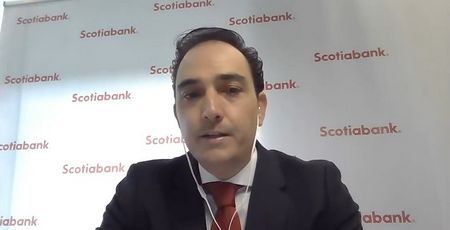
ESG please
Commitment to ESG was high among the panel. In July, Colombia adopted its sovereign green bond framework, paving the way for its first bond issuance – due in the third quarter of 2021 – making it the second country to issue green bonds in the region behind Chile.
Proceeds will finance a Ps2trn portfolio of 27 projects across several areas of the economy that will contribute to the country reaching its environmental goals and international commitments. The framework establishes the principles that the government will follow for the selection, evaluation, use of proceeds and its reporting commitments to investors on eligible expenditures from funds raised with green bonds. Vigeo Eiris, a Moody’s company, provided a second-party opinion on the framework and the portfolio.
Everything is now in place for Colombia to start marketing its first issue and deciding on the issuance process.
“We are deciding between doing a syndication or using auctions,” said Arias. “We’re probably going to go through our auctions system.”
And, taking inspiration from Germany, Colombia will likely auction a conventional bond due 2031 at the same time as the green bond.
“We will be the second country in Latin America to issue green bonds, but we will be the first country in the western hemisphere to issue green bonds in local currency, through our domestic market,” said Arias.
Over and above raising finances for its green projects, Arias hopes that the deal will also contribute to the development of a more robust green bond market in Colombia, with the sovereign issue providing a reference point for other borrowers in the private sector to benchmark their own deals.
For AFP Proteccion, ESG is one of the most important factors when it comes to portfolio selection. It became a signatory in 2020 to the Principles for Responsible Investment, is part of the Net Zero Asset Managers Initiative, and is encouraging Colombian issuers to improve levels of ESG disclosure. It is also looking forward to supporting the government’s green bond initiative.
Adoption of ESG factors in the corporate sphere is also progressing in terms of disclosure, reporting, sustainability strategies and commitments to reducing greenhouse gas emissions. Some have even accessed debt markets with ESG instruments – to the benefit of their costs of funds. And their efforts are not just focused on the environment.
Earlier in the year, Grupo Argos signed a Ps392bn five-year loan that featured pricing tied to gender diversity and greenhouse gas emissions.
“We reduced the cost of debt by around 8bp,” said Piedrahita. “But the facility’s interest rate could decrease by up to 100bp if targets are met.”
For Promigas, the broader aims of ESG are also important, particularly when it comes to relationships with the communities through which its pipelines are built. It has investment initiatives that contribute to community development to ensure that “the benefit of the pipeline is not only for the company, but also for the communities through which it passes”.
The increasing interest on ESG throughout the business community is reflected in demands on the banking industry in Colombia, regionally and globally. Scotiabank has expanded its ESG teams throughout its geographical presence to offer clients solutions across its platform. It has recently supported companies in the region to access the green bond market and has also written sustainability-linked loans in Colombia.
Building better
Commitment to ESG also comes in the form of building sustainably, and this has particular resonance for investment in and construction of infrastructure projects in Colombia, a sector that represents one of the cornerstones of the government’s growth programme. Arias is confident that Colombia has systems in place to help promote the country’s infrastructure market: an established and robust contract framework; an extensive dynamic pipeline of primary and secondary projects; and the depth of financial products to help refinance projects at various stages of development. On top of that sits the government’s own plans.
“There is a big transport infrastructure push from the government,” said Arias. “That traditionally meant only roads in Colombia, but we’re looking at mass rapid transit, such as metros and light rail. We are also planning to concession a few airports, two important projects in river navigation, and probably one train line in the remainder of this government.”
Infrastructure plays an important role not only in the future economic fortunes of the country but also in the plans of investors, corporates and bankers on the panel. Scotiabank has been providing liquidity to projects in 4G, 5G, roads, ports, airports and power over the last decade, and has recently extended its support to the renewables sector.
“Infrastructure is key for Colombia in fostering the recovery,” said Gutierrez. “Scotiabank is fully committed to the programme and ready to support clients with knowledge, funding, letters of credit, and so on.”
Promigas has recently completed a natural gas pipeline in the north of the country and is developing two concessions in Peru with an investment of around US$230m over the next five years. Diversifying its portfolio, however, is on its strategic agenda and that will involve expanding the LNG business and getting more involved in renewable energy, in addition to natural gas transport and distribution, that will guarantee the country’s energy security.
Grupo Energia Bogota has commited to build multiple transmission lines across Colombia, and is evaluating the risks of an LNG regasification project in Buena Ventura. In Peru, it is renewing a five-year plan with the government, where the focus is to increase coverage of the Lima area and provide access to gas for less privileged families.
For this year, Grupo Argos plans a total investment of around US$1.1bn, mostly in its renewable energy business Celsia.
“In Celsia, solar is a major issue for us right now in terms of renewables, and we have plans there to build up capacity to 120MW,” said Piedrahita.
There are also investment plans for another group business, Odinsa, of around US$70m in two roads, and US$120m in the cement business as that part of the business aims to become more productive and raise the focus on ESG.
Given the long-term nature of infrastructure projects, the asset class is a good fit for pension funds that need to match the duration of their liabilities. It is already one of the most important assets in AFP Proteccion’s portfolio, according to Herrera. It is equally important throughout the Colombian fund management industry, with Herrera noting that of the US$2.5bn of local private investments, some 50% is committed to infrastructure.
“We are definitely going to continue investing in infrastructure assets as we believe we can achieve important real returns for our clients from a long-term horizon, but we can also support the recovery of the economy by investing locally in infrastructure,” said Herrera. He also pointed out that the development of the private debt market in Colombia is bringing additional liquidity to the corporate sector.
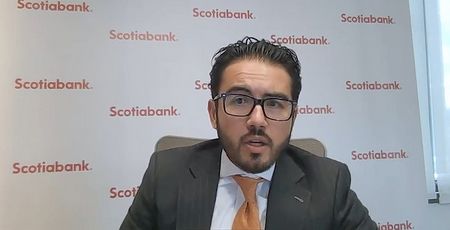
Summing up
The panel was cautiously optimistic for the future but respective of the difficulties experienced in Colombia during 2020, one of the biggest economic and cultural shocks in the country’s history. They were also conscious of the impact their operations can have, not just in revitalising the economy but in contributing to a more inclusive society. Sustainable growth was the prevailing takeaway from the panel.
“The government’s response and the resilience of the population helped mitigate most of the pandemic effects,” said Frieri. “But choices persist and we, as a company, are committed to overcome the effects of the crisis in a way that guarantees the safety of our stakeholders.”
Those dual ambitions were shared throughout the panel.
Grupo Energia Bogota is a supporter of the green sector, in terms of stability and growth prospects, and is actively pursuing that growth, according to Tabares. Its ESG credibility is paramount in financing its ambitions.
“We rely on the capital markets for funding,” said Tabares. “Our ESG approach aims to create a more robust framework, better disclosure and better relationships with investors so we can best take advantage of the current conditions in the market.”
A favourable assessment of business conditions by investors is also behind the optimism identified with Grupo Argos, which Piedrahita said is in the right sector at the right time.
“If you look at the group’s sector: cement, energy, roads and networks then we are back on track. This is good news,” said Piedrahita. “We have the full support of local and international investors and plenty of opportunities in which to invest and to create value for our shareholders.”
The government’s main strategy is to expand the economy, but it also aims to do it in a way that has a positive impact on the country’s most vulnerable and on those most affected by the pandemic. It needs the right infrastructure in place to fulfil its objectives.
“We have tried to realise most of our advances in law, such as the recent energy transition law, and in green transportation, in green bonds, in infrastructure development,” said Arias. He also emphasised the importance of having strong institutions that protect long-term investments from the threat of political electioneering. He also believes in markets.
“A few years ago, we only had one developed market: the public debt market,” said Arias. “Gradually, markets have developed, and local and international investors now have a choice: a more robust equity market, and a nascent but very dynamic infrastructure market. Our currency now really floats, and I’m very impressed by the development of the swaps and hedging markets in Colombia.”
For Scotiabank Colpatria, Colombia is a very important market, said Ale, and the bank is committed to aiding the economic recovery in the country and ready to support its customers in Colombia and throughout the region.
The webcast is free to view, on-demand. Access it here.
To see the digital version of this report, please click here
To purchase printed copies or a PDF of this report, please email gloria.balbastro@refinitiv.com
